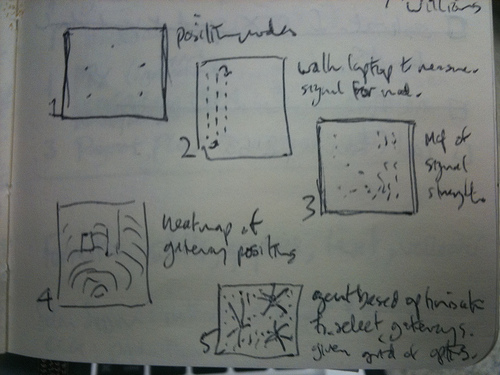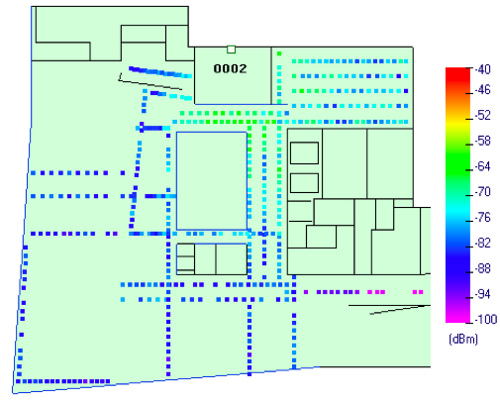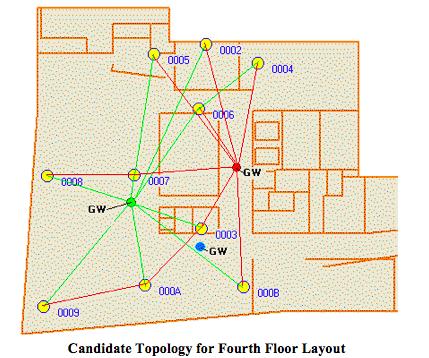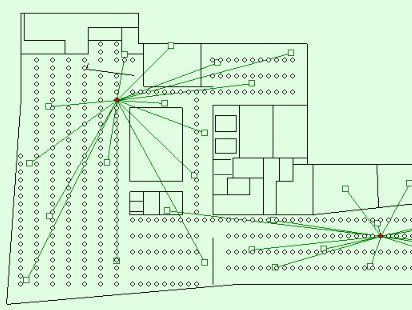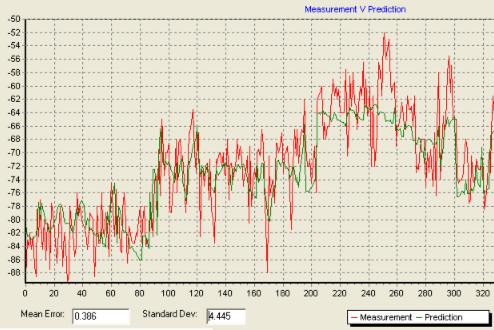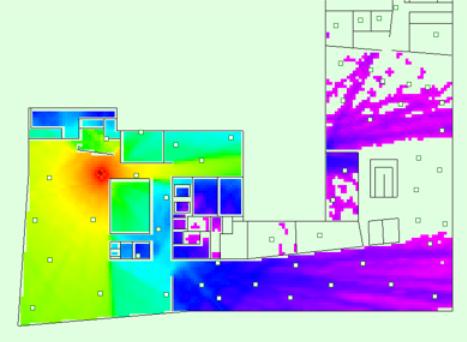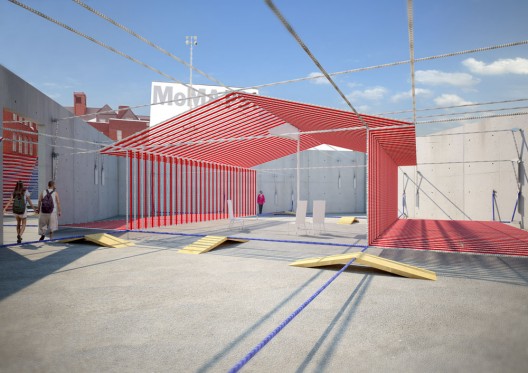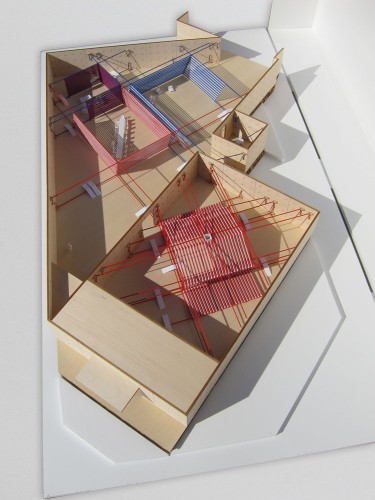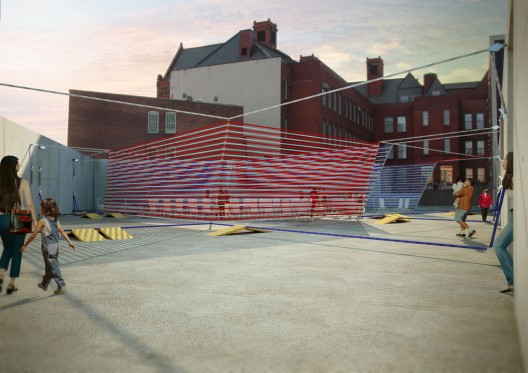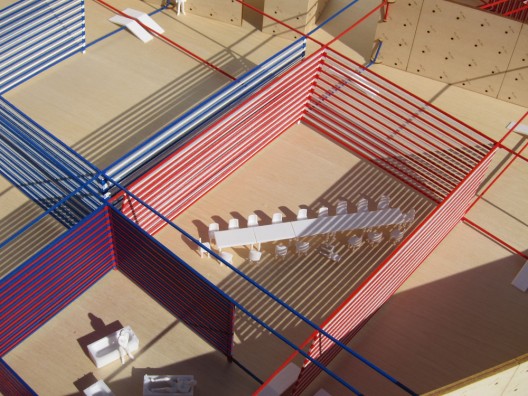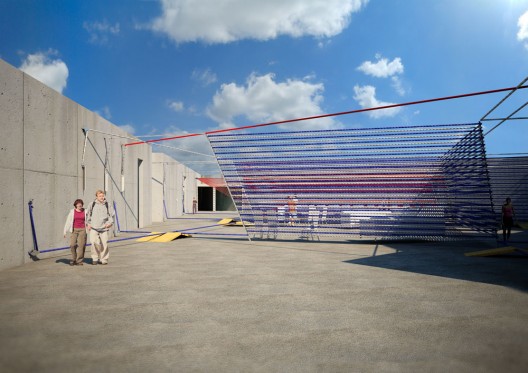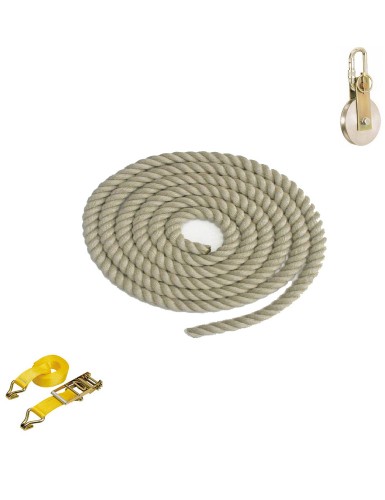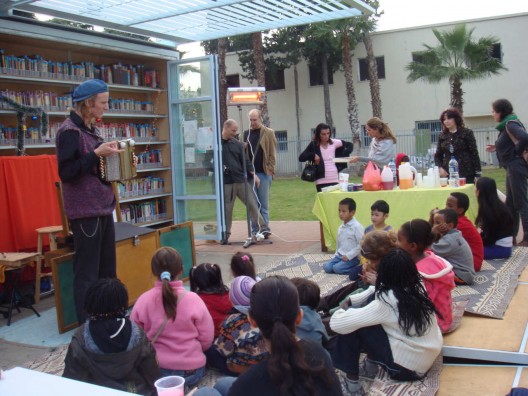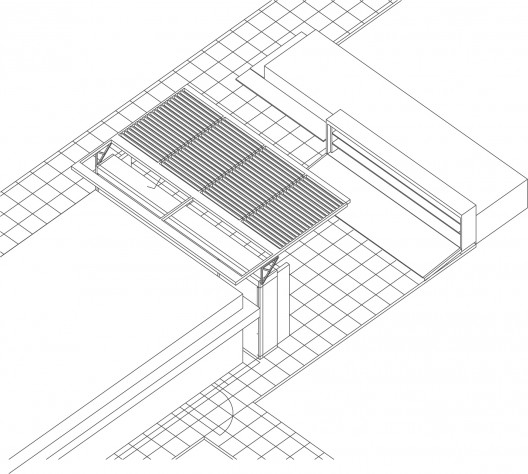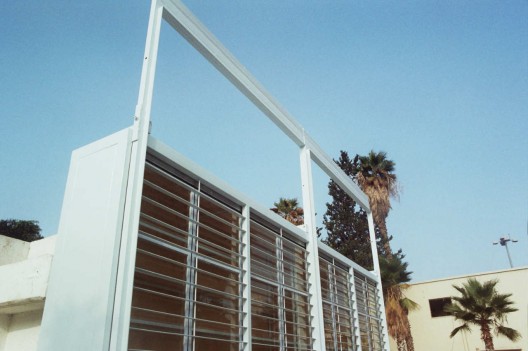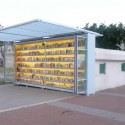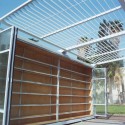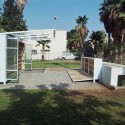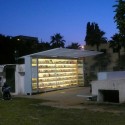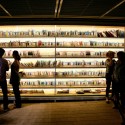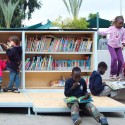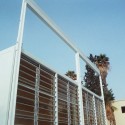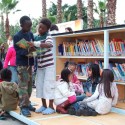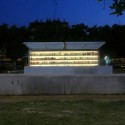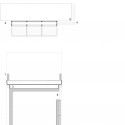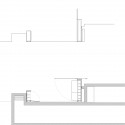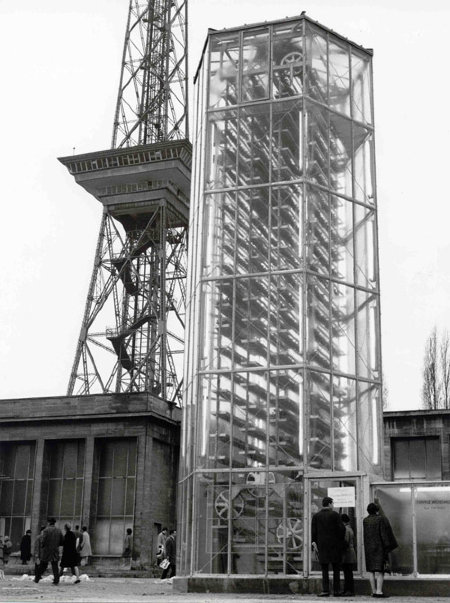Via The Mobile City
-----
by Martijn de Waal
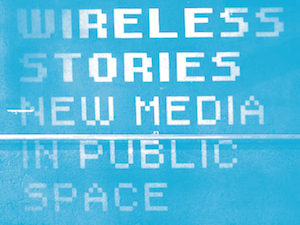
Last week the Dutch Mediafund and the Design department of the Sandberg Academy organized the conference Wireless Stories: new media in public space. The Mobile City was invited to provide the opening keynote (by Michiel de Lange) as well as a closing statement (yours truly), so here are my observations of the day:
What struck me most after a day’s worth of presentations of new media interventions – varying from a moodwall to complex multinlineair location based storytelling projects - was that the talks articulated both a sense of optimism as well as a sense of doubt.
There was a lot of optimism that new media would make urban public spaces more interesting, layering them with depth, connecting people, spark democratic debates, turn them into playgrounds and empower citizens.
Yet at the same time there were some doubts. Although the opportunities are there, many of the speakers were still not sure how exactly they are to be effectuated. How do we indeed engage people in public spaces with the help of these new technologies?
Optimism: enhancing public space with locative and wireless media
Let’s start with the optimist visions. During the day several visions of what public space is, which functions it fulfills, and what is problematic about it were addressed.
1. Public Space as a place for deliberate democracy
This is of course a vision that builds upon theories by the likes of Hannah Arendt and Jurgen Habermas, who have theorized public space as a meeting ground for citizens where they come together to discuss their common future.
At the conference Tobias Ebsen presented Climate on the Wall, an interactive mediafacade by the Digital Urban Living Lab (we have written about this project before) at Aarhus University. Climate on the Wall is based on the concept of ‘magnetic poetry’: text balloons with words are projected on a facade, and passers-by can drag the words in any order, forming poetic sentences, political statements or just nonsense.
The hope expressed in the project was that people would use the installation to make statements about the environment. However, that didnot always happen. People just started playing with it, or even using the installation in a subversive way. What the creators didnot forsee though is that debate did take place: not on the wall itself, but rather amongst the bystanders/ audience. The playful and sometimes subversive uses had turned their installation into a conversation piece.
2. Public Space as a theatre, as a stage for the representation of cultural identities and political movements
Various speakers at the conference alluded to the current events in Tunesia and Egypt, reflecting on the role of public space as a place for the representation of political movements. These physical and bodily mass events are now partially coordinated by the use of digital media in the form of social networks ans sms messages. Although in my opinion claims of a ‘Twitter revolution’, where the technology causes the revolts should be distrusted, there is no doubt an interesting dynamic going on between these media and the way collective political imaginations are shaped as well as the (organization of) physical movements through which these imaginations are articulated.
On a different but somewhat comparable plane, public space can also be understood as a site for cultural representation, where (sub)cultures proudly display themselves, (temporarily) claim a part of public space to assert their right to exist, or just to make it their own. At the conference the dance film Diamond Dancers bu Quirine Racke and Helena Muskens made me think of this particular approach of public space. The film is a flash mob performance of provincial line dancers who travel to amsterdam to stage a surprise performance on one of the main public squares.
3 Public space as a site for cultural experiences and exchanges
A number of speakers approached public space as a stage for cultural experiences. In these examples, wireless media are to enhance the experience of a particular place, for instance by showing historic layers, or connect places to personal stories, to make people aware of alternative points of view or just to tell an exciting story or engage people in a game.
Dick van Dijk of Waag Society showed their 7scenes platform – a tool for the annotation of maps and the authoring of location based stories and games. They are using this tool to develop an app for the Amsterdam museum – as part of an international trend sometimes called ‘museums without walls’. Earlier they also authored other locative experiences. For instance Madretsma.net is a route through Amsterdam commemorating the slavery trade. Here, the interface was much more low tech: at particular points in the city users could call a phone number and listen to a particular story connected to that place.
Michael Epstein of Untravel Media also showed a number of what he had called ‘terratives’ – narrative that are told on location. (see an earlier Mobile City report for a more in depth analysis of the genre). For instance, in Boston they created a project named Walking Cinema: Murder on Beacon Hill. This project took the form of a walk along a number of locations in Boston, where scenes (movie clips) from a 19th century murder mystery were played out on a smart phone.
These are not just geo-annotated movie clips. To draw the user in, some dramaturgic elements were added. First there was a narrator, that invited participants to follow in her footsteps, also turning the player into a character. Second, actual physical props played an important role and third, players / viewers also had to interact with real people in the actual surroundings. For instance one of the scenes took place in the lobby of a luxurious hotel and some employees there were involved in the story.
Martin Rieser showed The third woman a project that was even more complex in its story telling. Where Walking Cinema was a more or less lineair narrative that played out on location, the Third Woman added interactive elements, where participants could influence the mood of particular filmclips they were shown.
4 Feeling at home in Public Space
A fourth approach of wireless media I encountered was not so much connected to a particular understanding of public space, but rather trying to deal with one of its inherent problems. If public space is a place where we encounter strangers, who might also be different from ourselves, than for many this can also lead to a somewhat uncanny feeling. Especially at certain locations that are not lively public spaces but somewhat neglected passage ways, people can easily feel unsafe.
Can designers intervene with digital or wireless media to make citizens feel more at home in public space? For instance by using visualizations of harvested mobile phone or social network data that show collective rhythms of citizens?
In this category, Matthijs ten Berge showed his Moodwall – a beautiful light installation in a dark tunnel in de Bijlmer area of Amsterdam. Its interactive light patterns are to make passers-by feel more at home in these surroundings.
The doubts
I was (although not necessarily unpleasantly) surprised by all these optimist visions , since often in the general debate about the affordances of digital media in relation to public space dystopian scenario’s are evoked. Digital and locative media are after all not only media of connection, providing added layers of experience. They also have the affordance to turn the city into a panopticon and allow their users to retract in their safe, personal communication bubbles – turning public spaces into private experiences. These more critical points of view were sometimes mentioned, but not really addressed during the conference.
That is not to say that there were no doubts expressed. On the contrary, although speakers were overall enthusiastic about the opportunities of digital media, they also found that the actual implementation, scalability and engagement of users is hard to accomplish.
The technology is here: we can now tweet, geotag, program urban screens or use the private screens of the mobile phone. Yet the question remains: how to actually engineer an interesting experience, how to seduce people to actually interact with the content? This question is all the more relevant, since one of the characteristics of wireless media is that they often are invisible. So it is not only a matter of engaging people but also make them aware of the added layers etc. All of the projects shown at the conference had somehow struggled with these issues, and it is fair to say that this will also remain one of the most important questions in wireless storytelling in the near future.
Lessons Learned
With regard to the design of locative experiences, I took two important lessons from these examples. The first is – as Michael Epstein put it strikingly – ‘Matter is a test for our curiosity’, meaning that material artefacts in real space can draw people into the story. The tension in locative storytelling projects comes from actually drawing in objects, locations and people, making it tactical and physical. Especially the use of people can really make the experience much more appealing. Although this is also very hard to arrange, but it is worth to try to draw in local shopkeepers, hotel lobby attendants or others into the scenario. In effect, as a narrative discipline locative storytelling is probably closest to theatre – you need a strong dramaturgy, script, actors and perhaps a gameplay. This also can make it hard to scale locative productions or reenact them at other locations. (see our earlier article Some notes on the design of pervasive games for more thoughts about this)
A second lesson, with regard to locative projects that try to engage people into discussions or exchange is to not overdetermine the design. Make it a playful design to draw people in, but also leave some room for people to appropriate it, to play with the rules of the game. Sometimes its more useful to design a conversation piece than wanting to direct the conversation itself.
